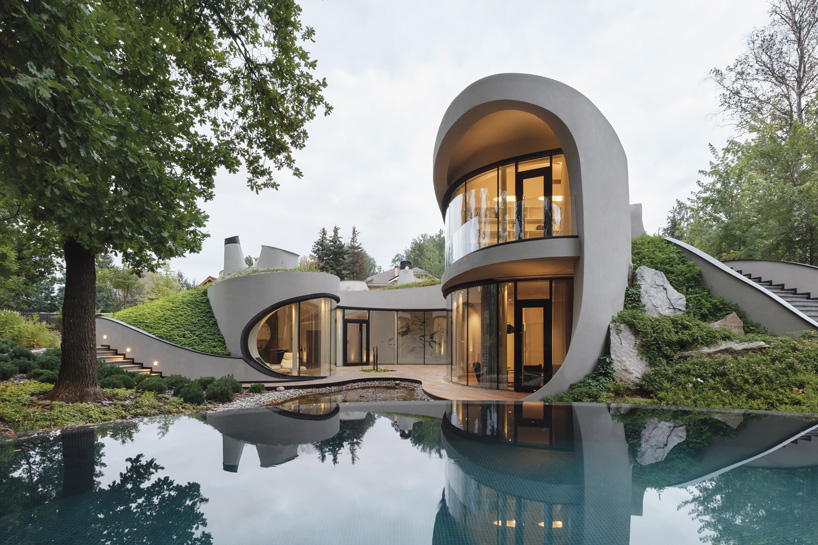How CDA Architects Deliver Cutting-Edge Solutions for Sustainable Architecture
How CDA Architects Deliver Cutting-Edge Solutions for Sustainable Architecture
Blog Article
A Detailed Review of Architectural Designs and Their Impact on Modern City Preparation and Growth
Architectural designs have actually long served as a mirror to the social worths and technical developments of their time, playing a critical duty in shaping modern city preparation and growth. From the magnificence of Neoclassicism to the utilitarian strategy of Brutalism, each design has presented special concepts that affect metropolitan visual appeals and capability.
Historic Introduction of Building Styles

As societies transitioned through the Center Ages, Gothic style emerged, characterized by its verticality and intricate describing, matching the spiritual goals of the era. The Renaissance noted a resurgence of classical ideals, combining art and design in innovative means that affected subsequent designs across Europe.

Today, building designs remain to advance, driven by globalization and sustainability issues, reflecting a dynamic interaction between heritage and advancement. This historical introduction underscores the relevance of architecture as a mirror of societal advancement and as a catalyst for metropolitan advancement.
Trick Architectural Styles Explained
The diversity of architectural styles mirrors the myriad influences that shape our developed setting, each personifying distinct qualities and cultural significances. Trick building designs include Classic, Gothic, Baroque, Modernism, and Postmodernism, each standing for one-of-a-kind historic contexts and visual philosophies.
Classic design, rooted in ancient Greece and Rome, highlights proportion, percentage, and the use of columns (cda architects). In contrast, Gothic architecture, thriving in the center Ages, is identified by sharp arcs, ribbed safes, and flying buttresses, creating an aerial top quality in sanctuaries. Baroque style, arising in the 17th century, is noted by grandeur, elaborate ornamentation, and a vibrant interaction of light and darkness
Innovation, which obtained energy in the very early 20th century, focuses on feature over type, using new materials like steel and glass to produce minimalist structures. Postmodernism, responding versus the austerity of Modernism, accepts eclecticism and historical recommendation, typically integrating lively elements and paradox.

Effect on Urban Preparation
In shaping the growth of cities, architectural designs substantially affect urban preparation choices. The choice of building style typically dictates the appearances, capability, and overall personality of urban atmospheres. Modernism, with its focus on minimalism and functionality, motivates open rooms and the combination of modern technology, shaping city designs that focus on efficiency and ease of access. Alternatively, traditional styles might emphasize historical conservation, bring about urban styles that preserve social heritage and promote pedestrian-friendly atmospheres.
Moreover, architectural styles can affect zoning guidelines and land utilize plans. Urban organizers have to consider the dominating building fads when designing districts, guaranteeing that new advancements harmonize browse around this site with existing structures. This consideration fosters natural metropolitan landscapes and improves neighborhood identity.
The implementation of specific building designs can likewise affect socioeconomic variables within a city. As an example, premium contemporary designs might bring in upscale citizens and services, bring about gentrification, more while extra inexpensive housing remedies may prioritize functional and sustainable styles to suit diverse populations. Inevitably, the interplay in between architectural designs and metropolitan preparation produces vibrant cities that show both historical context and modern needs, forming the lived experiences of their residents
Sustainability and Modern Style
Architectural designs play a critical duty in attending to modern difficulties, specifically in the realm of sustainability. As city areas broaden and environmental concerns increase, contemporary architecture progressively accepts sustainable style concepts that prioritize energy performance, resource preservation, and minimal ecological impact.
Contemporary architectural motions, such as biophilic design and environment-friendly architecture, supporter for frameworks that integrate with their environments, utilizing natural products and advertising biodiversity. These styles often incorporate renewable energy sources, such as photovoltaic panels and wind generators, to decrease dependence on nonrenewable fuel sources and lower carbon footprints.
Furthermore, the assimilation of advanced innovations, such as wise building systems, improves energy management, enhancing source usage while making certain owner comfort. Innovative water monitoring methods, including rainwater harvesting and greywater recycling, additional add to lasting metropolitan environments.
Notably, sustainability prolongs beyond ecological worries; it incorporates social and economic dimensions also. By promoting neighborhood health and advertising inclusivity, modern building designs straighten with lasting development objectives. The advancement of architectural methods proceeds to form resilient cities that not only meet the requirements of the existing yet additionally secure the future for generations to come.
Community Interaction in Design
Area involvement in design acts as an essential bridge in between engineers and the populaces they offer, making sure that the built environment reflects the needs and goals of its users. This joint process welcomes community participants to add their insights and preferences, promoting a sense of possession and responsibility toward the areas they occupy.
Effective neighborhood involvement employs various techniques, such as workshops, studies, and public discussion forums, to collect varied perspectives. These methods promote a two-way discussion, permitting engineers to recognize local contexts while empowering citizens to voice their concerns and desires. This inclusivity not just boosts the layout top quality but additionally advertises social equity by attending to the unique obstacles faced by marginalized teams.
Moreover, area engagement can bring about innovative solutions that may not arise in a conventional layout process. By incorporating neighborhood understanding and social values, architects can produce spaces that resonate even more deeply with users, enhancing usability and sustainability. Eventually, focusing on community engagement in style processes results in atmospheres that support social communications, assistance well-being, and enhance community ties, therefore playing a pivotal function fit modern-day city landscapes.
Conclusion
Architectural styles have actually profoundly affected contemporary city planning and advancement, showing evolving social and technological contexts. The combination of historic appearances with contemporary needs cultivates metropolitan atmospheres go to this website that prioritize sustainability and area engagement. As cities proceed to expand and adjust, the recurring discussion in between building heritage and modern-day layout principles will remain essential in developing comprehensive, dynamic rooms that improve lifestyle and promote social equity. The future of urban development depend upon this unified balance.
Report this page